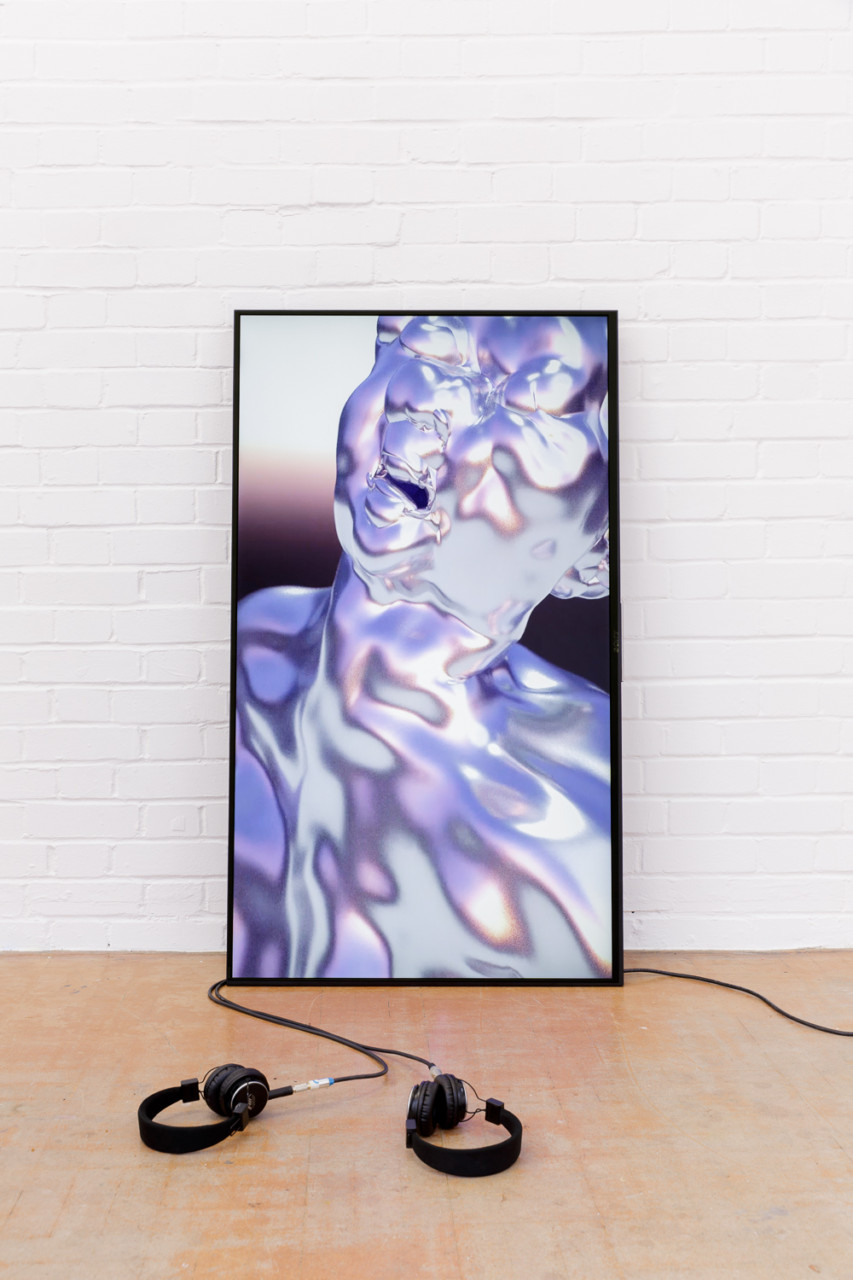


Barbara Kapusta, Dangerous Bodies, 2019. Courtesy the artist and Gianni Manhattan, Vienna. Photographer: Tim Bowditch
Kunstraum is a non-profit space, off Whitecross Street Market in Clerkenwell. It has a programme of exhibitions of European artists who are little known in the UK, despite regularly exhibiting in many other European countries. The current exhibition is a solo project by Vienna-based artist Barbara Kapusta (b.1983), whose work I’ve had the opportunity to view at the exhibition Hysterical Mining at the Kunsthalle Vienna during our CPD Museum Curators’ Research Trip to Vienna in the summer.
Barbara Kapusta’s London debut is an intimate exhibition that explores ideas about the self in the digital realm, the adoption or re-enactment of various personas, and the role of language in queering expectations about the body, the self and the world around us.
At the centre of the exhibition are a group of sculptures that look like three matchstick figures. If interpreted freely, they could be in conversation, in accord or in competition with each other. Then again, they could always be different aspects of the same person. We tend to think of the self as one entity, but it is made up of different entities that make up (or fail to make up) a whole. So in this sense, the work seems to be about the performance of self, or rather the performance of a multifaceted self.
Kapusta is particularly interested in the unstable and unfixed notion of self in the digital world. Her new video, the strongest work in the exhibition, features a hybrid figure: a crossbreed of human and technology. This gender-less protagonist has a body which, throughout the duration of the video, is constantly wavering: at times inflating, occasionally shrinking, always reshaping. The body appears to be reshaping in response to its changing conditions and its various mental states. Its shape is therefore unpredictable, uneven, uncontrolled. Could this be the reason the artist has titled the exhibition Dangerous Bodies? Is what escapes our knowledge potentially dangerous? And if so, are politics and power the main questions here and is the body an agency of both? The electronic music that soundtracks the video is making me lose myself in the piece: it is both liberating and unifying, a successful trope of over-identification.
Kapusta links the body with the quest for identity and the fluidity of gender. A body that loves, suffers, ages, is a vulnerable body, at the heart of identity politics. Several tiny sculptural forms made in delicate media such as porcelain or ceramics are meant to represent body parts. They look both shapeless and pending shape, familiar but hard to pin down, known yet ‘other’.
The acceptance of fragmentation and incompleteness is a way forward for the artist, as the text piece on the main gallery wall suggests and can be read as diary entry, a visual poem or a manifesto: ‘our bodies are open. We touch. We fight each other. This is not a fragile formation. We are dangerous bodies.’
Vassilios Doupas
Curator of Programmes
Kunstraum, 21 Roscoe Street, London EC1Y 8PT. Open Wednesday-Saturday 12.00-18.00. Exhibition continues until 16 November 2019. www.kunstraum.org.uk